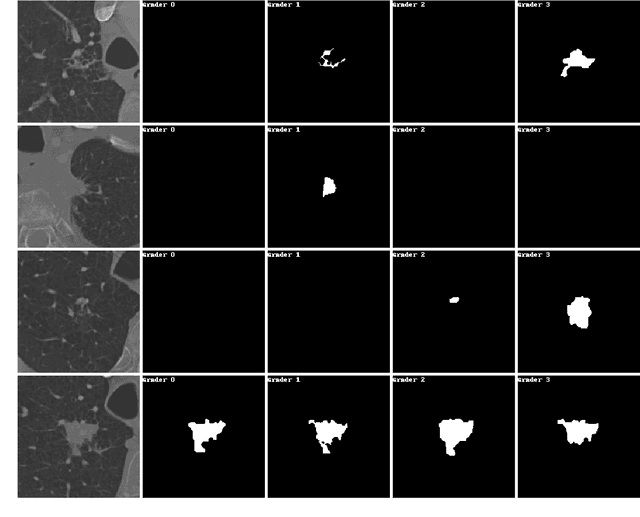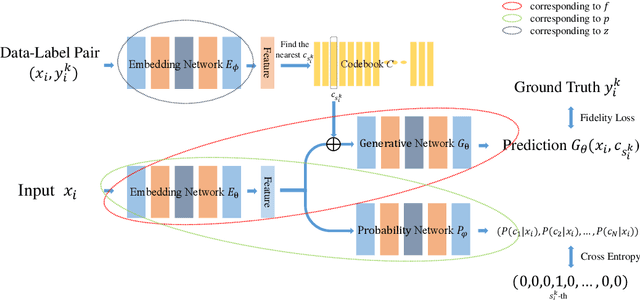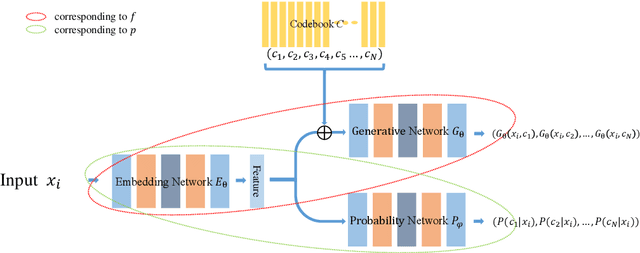Lok Ming Lui
A Registration-Based Star-Shape Segmentation Model and Fast Algorithms
Aug 11, 2025Abstract:Image segmentation plays a crucial role in extracting objects of interest and identifying their boundaries within an image. However, accurate segmentation becomes challenging when dealing with occlusions, obscurities, or noise in corrupted images. To tackle this challenge, prior information is often utilized, with recent attention on star-shape priors. In this paper, we propose a star-shape segmentation model based on the registration framework. By combining the level set representation with the registration framework and imposing constraints on the deformed level set function, our model enables both full and partial star-shape segmentation, accommodating single or multiple centers. Additionally, our approach allows for the enforcement of identified boundaries to pass through specified landmark locations. We tackle the proposed models using the alternating direction method of multipliers. Through numerical experiments conducted on synthetic and real images, we demonstrate the efficacy of our approach in achieving accurate star-shape segmentation.
Learning-based density-equalizing map
Jun 10, 2025Abstract:Density-equalizing map (DEM) serves as a powerful technique for creating shape deformations with the area changes reflecting an underlying density function. In recent decades, DEM has found widespread applications in fields such as data visualization, geometry processing, and medical imaging. Traditional approaches to DEM primarily rely on iterative numerical solvers for diffusion equations or optimization-based methods that minimize handcrafted energy functionals. However, these conventional techniques often face several challenges: they may suffer from limited accuracy, produce overlapping artifacts in extreme cases, and require substantial algorithmic redesign when extended from 2D to 3D, due to the derivative-dependent nature of their energy formulations. In this work, we propose a novel learning-based density-equalizing mapping framework (LDEM) using deep neural networks. Specifically, we introduce a loss function that enforces density uniformity and geometric regularity, and utilize a hierarchical approach to predict the transformations at both the coarse and dense levels. Our method demonstrates superior density-equalizing and bijectivity properties compared to prior methods for a wide range of simple and complex density distributions, and can be easily applied to surface remeshing with different effects. Also, it generalizes seamlessly from 2D to 3D domains without structural changes to the model architecture or loss formulation. Altogether, our work opens up new possibilities for scalable and robust computation of density-equalizing maps for practical applications.
Circular Image Deturbulence using Quasi-conformal Geometry
Apr 21, 2025Abstract:The presence of inhomogeneous media between optical sensors and objects leads to distorted imaging outputs, significantly complicating downstream image-processing tasks. A key challenge in image restoration is the lack of high-quality, paired-label images required for training supervised models. In this paper, we introduce the Circular Quasi-Conformal Deturbulence (CQCD) framework, an unsupervised approach for removing image distortions through a circular architecture. This design ensures that the restored image remains both geometrically accurate and visually faithful while preventing the accumulation of incorrect estimations. The circular restoration process involves both forward and inverse mapping. To ensure the bijectivity of the estimated non-rigid deformations, computational quasi-conformal geometry theories are leveraged to regularize the mapping, enforcing its homeomorphic properties. This guarantees a well-defined transformation that preserves structural integrity and prevents unwanted artifacts. Furthermore, tight-frame blocks are integrated to encode distortion-sensitive features for precise recovery. To validate the performance of our approach, we conduct evaluations on various synthetic and real-world captured images. Experimental results demonstrate that CQCD not only outperforms existing state-of-the-art deturbulence methods in terms of image restoration quality but also provides highly accurate deformation field estimations.
Quasi-Conformal Convolution : A Learnable Convolution for Deep Learning on Riemann Surfaces
Feb 04, 2025Abstract:Deep learning on non-Euclidean domains is important for analyzing complex geometric data that lacks common coordinate systems and familiar Euclidean properties. A central challenge in this field is to define convolution on domains, which inherently possess irregular and non-Euclidean structures. In this work, we introduce Quasi-conformal Convolution (QCC), a novel framework for defining convolution on Riemann surfaces using quasi-conformal theories. Each QCC operator is linked to a specific quasi-conformal mapping, enabling the adjustment of the convolution operation through manipulation of this mapping. By utilizing trainable estimator modules that produce Quasi-conformal mappings, QCC facilitates adaptive and learnable convolution operators that can be dynamically adjusted according to the underlying data structured on Riemann surfaces. QCC unifies a broad range of spatially defined convolutions, facilitating the learning of tailored convolution operators on each underlying surface optimized for specific tasks. Building on this foundation, we develop the Quasi-Conformal Convolutional Neural Network (QCCNN) to address a variety of tasks related to geometric data. We validate the efficacy of QCCNN through the classification of images defined on curvilinear Riemann surfaces, demonstrating superior performance in this context. Additionally, we explore its potential in medical applications, including craniofacial analysis using 3D facial data and lesion segmentation on 3D human faces, achieving enhanced accuracy and reliability.
Shape Prior Segmentation Guided by Harmonic Beltrami Signature
Jul 05, 2024



Abstract:This paper presents a novel shape prior segmentation method guided by the Harmonic Beltrami Signature (HBS). The HBS is a shape representation fully capturing 2D simply connected shapes, exhibiting resilience against perturbations and invariance to translation, rotation, and scaling. The proposed method integrates the HBS within a quasi-conformal topology preserving segmentation framework, leveraging shape prior knowledge to significantly enhance segmentation performance, especially for low-quality or occluded images. The key innovation lies in the bifurcation of the optimization process into two iterative stages: 1) The computation of a quasi-conformal deformation map, which transforms the unit disk into the targeted segmentation area, driven by image data and other regularization terms; 2) The subsequent refinement of this map is contingent upon minimizing the $L_2$ distance between its Beltrami coefficient and the reference HBS. This shape-constrained refinement ensures that the segmentation adheres to the reference shape(s) by exploiting the inherent invariance, robustness, and discerning shape discriminative capabilities afforded by the HBS. Extensive experiments on synthetic and real-world images validate the method's ability to improve segmentation accuracy over baselines, eliminate preprocessing requirements, resist noise corruption, and flexibly acquire and apply shape priors. Overall, the HBS segmentation framework offers an efficient strategy to robustly incorporate the shape prior knowledge, thereby advancing critical low-level vision tasks.
A deep neural network framework for dynamic multi-valued mapping estimation and its applications
Jun 29, 2024



Abstract:This paper addresses the problem of modeling and estimating dynamic multi-valued mappings. While most mathematical models provide a unique solution for a given input, real-world applications often lack deterministic solutions. In such scenarios, estimating dynamic multi-valued mappings is necessary to suggest different reasonable solutions for each input. This paper introduces a deep neural network framework incorporating a generative network and a classification component. The objective is to model the dynamic multi-valued mapping between the input and output by providing a reliable uncertainty measurement. Generating multiple solutions for a given input involves utilizing a discrete codebook comprising finite variables. These variables are fed into a generative network along with the input, producing various output possibilities. The discreteness of the codebook enables efficient estimation of the output's conditional probability distribution for any given input using a classifier. By jointly optimizing the discrete codebook and its uncertainty estimation during training using a specially designed loss function, a highly accurate approximation is achieved. The effectiveness of our proposed framework is demonstrated through its application to various imaging problems, using both synthetic and real imaging data. Experimental results show that our framework accurately estimates the dynamic multi-valued mapping with uncertainty estimation.
Deep Learning-Based Quasi-Conformal Surface Registration for Partial 3D Faces Applied to Facial Recognition
May 16, 2024



Abstract:3D face registration is an important process in which a 3D face model is aligned and mapped to a template face. However, the task of 3D face registration becomes particularly challenging when dealing with partial face data, where only limited facial information is available. To address this challenge, this paper presents a novel deep learning-based approach that combines quasi-conformal geometry with deep neural networks for partial face registration. The proposed framework begins with a Landmark Detection Network that utilizes curvature information to detect the presence of facial features and estimate their corresponding coordinates. These facial landmark features serve as essential guidance for the registration process. To establish a dense correspondence between the partial face and the template surface, a registration network based on quasiconformal theories is employed. The registration network establishes a bijective quasiconformal surface mapping aligning corresponding partial faces based on detected landmarks and curvature values. It consists of the Coefficients Prediction Network, which outputs the optimal Beltrami coefficient representing the surface mapping. The Beltrami coefficient quantifies the local geometric distortion of the mapping. By controlling the magnitude of the Beltrami coefficient through a suitable activation function, the bijectivity and geometric distortion of the mapping can be controlled. The Beltrami coefficient is then fed into the Beltrami solver network to reconstruct the corresponding mapping. The surface registration enables the acquisition of corresponding regions and the establishment of point-wise correspondence between different partial faces, facilitating precise shape comparison through the evaluation of point-wise geometric differences at these corresponding regions. Experimental results demonstrate the effectiveness of the proposed method.
QIS : Interactive Segmentation via Quasi-Conformal Mappings
Feb 22, 2024Abstract:Image segmentation plays a crucial role in extracting important objects of interest from images, enabling various applications. While existing methods have shown success in segmenting clean images, they often struggle to produce accurate segmentation results when dealing with degraded images, such as those containing noise or occlusions. To address this challenge, interactive segmentation has emerged as a promising approach, allowing users to provide meaningful input to guide the segmentation process. However, an important problem in interactive segmentation lies in determining how to incorporate minimal yet meaningful user guidance into the segmentation model. In this paper, we propose the quasi-conformal interactive segmentation (QIS) model, which incorporates user input in the form of positive and negative clicks. Users mark a few pixels belonging to the object region as positive clicks, indicating that the segmentation model should include a region around these clicks. Conversely, negative clicks are provided on pixels belonging to the background, instructing the model to exclude the region near these clicks from the segmentation mask. Additionally, the segmentation mask is obtained by deforming a template mask with the same topology as the object of interest using an orientation-preserving quasiconformal mapping. This approach helps to avoid topological errors in the segmentation results. We provide a thorough analysis of the proposed model, including theoretical support for the ability of QIS to include or exclude regions of interest or disinterest based on the user's indication. To evaluate the performance of QIS, we conduct experiments on synthesized images, medical images, natural images and noisy natural images. The results demonstrate the efficacy of our proposed method.
Enhancing Facial Classification and Recognition using 3D Facial Models and Deep Learning
Dec 08, 2023Abstract:Accurate analysis and classification of facial attributes are essential in various applications, from human-computer interaction to security systems. In this work, a novel approach to enhance facial classification and recognition tasks through the integration of 3D facial models with deep learning methods was proposed. We extract the most useful information for various tasks using the 3D Facial Model, leading to improved classification accuracy. Combining 3D facial insights with ResNet architecture, our approach achieves notable results: 100% individual classification, 95.4% gender classification, and 83.5% expression classification accuracy. This method holds promise for advancing facial analysis and recognition research.
Deformation-Invariant Neural Network and Its Applications in Distorted Image Restoration and Analysis
Oct 04, 2023



Abstract:Images degraded by geometric distortions pose a significant challenge to imaging and computer vision tasks such as object recognition. Deep learning-based imaging models usually fail to give accurate performance for geometrically distorted images. In this paper, we propose the deformation-invariant neural network (DINN), a framework to address the problem of imaging tasks for geometrically distorted images. The DINN outputs consistent latent features for images that are geometrically distorted but represent the same underlying object or scene. The idea of DINN is to incorporate a simple component, called the quasiconformal transformer network (QCTN), into other existing deep networks for imaging tasks. The QCTN is a deep neural network that outputs a quasiconformal map, which can be used to transform a geometrically distorted image into an improved version that is closer to the distribution of natural or good images. It first outputs a Beltrami coefficient, which measures the quasiconformality of the output deformation map. By controlling the Beltrami coefficient, the local geometric distortion under the quasiconformal mapping can be controlled. The QCTN is lightweight and simple, which can be readily integrated into other existing deep neural networks to enhance their performance. Leveraging our framework, we have developed an image classification network that achieves accurate classification of distorted images. Our proposed framework has been applied to restore geometrically distorted images by atmospheric turbulence and water turbulence. DINN outperforms existing GAN-based restoration methods under these scenarios, demonstrating the effectiveness of the proposed framework. Additionally, we apply our proposed framework to the 1-1 verification of human face images under atmospheric turbulence and achieve satisfactory performance, further demonstrating the efficacy of our approach.
 Add to Chrome
Add to Chrome Add to Firefox
Add to Firefox Add to Edge
Add to Edge